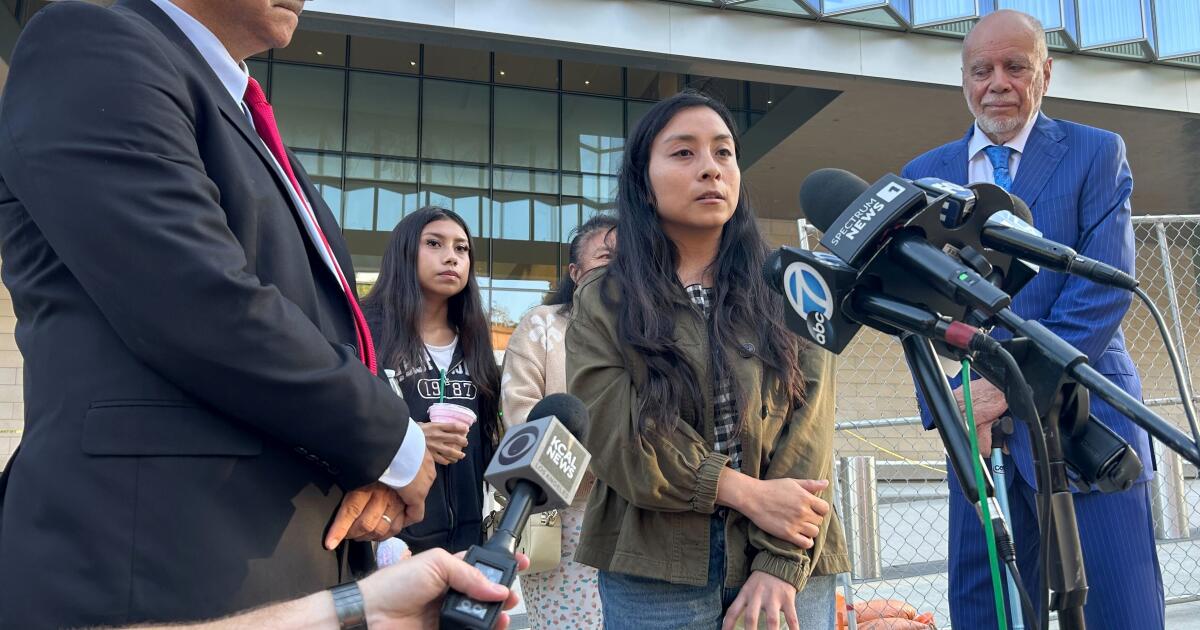Washington, D.C
Washington D.C. Democrats and pseudo-left support draconian, punitive crime bill
The Council of the District of Columbia, Washington D.C.’s local legislative body, voted on February 6 to advance the right-wing “law and order” Secure DC Omnibus Amendment Act of 2024. A final vote will take place within the next few weeks, during which more deliberations and amendments are expected to be made.
The bill combines proposals from several crime bills proposed last year, in the wake of a supposed crime wave that has hit the District. According to official figures, the city’s homicide rate has increased by 36 percent in the past year, the highest since the 1990s.
As is the case in Democratic Party-run governments at the local and national levels, rather than deal with the root social causes of crime, bourgeois politicians advocate a massive crackdown on the poorest layers of the population and criminalizing poverty.
The bill would give the chief of police the power to create temporary “drug-free zones” for a period of five days at a time. Within these drug-free zones, if the police believe a group of at least two people intend to commit a drug-related crime, they could be asked to leave or face arrest. This portion of the bill would give encouragement to police harassment against groups congregating in such zones for other reasons.
Theft for the purpose of reselling merchandise would be treated as a felony with a maximum sentence of 15 years in prison. A punitive amendment which would have reduced the threshold for first-degree theft—punishable by up to 10 years in prison—from $1,000 to $500 was deferred for the final vote.
The bill would drastically increase the length of pre-trial detention from a maximum of five days to 225 days. Furthermore, the bill would permit pre-trial detention of juveniles for many crimes, including violent crimes and certain unarmed offenses. The D.C. Jail has been cited on numerous occasions for its inhumane and downright horrific conditions.
“Every day, I hear from residents across all eight wards about the urgent need to address crime in our neighborhoods,” the bill’s sponsor, Democratic Councilwoman Brooke Pinto, declared in a press release last month. In a sham effort to provide the “law and order” bill with a popular gloss, Pinto added, “It is resoundingly clear—from residents across the District, businesses, visitors and our federal and regional partners that urgent and effective action is needed now.”
In fact, “urgent and effective action,” that is, addressing underlying issues impacting Washington D.C.’s increasingly impoverished working class, is excluded from this bill and the city’s Democratic Party establishment’s overall agenda.
Nowhere in the bill are the root causes of crime addressed—poverty and the soaring cost of living. Currently, one in seven people in the District of Columbia live below the poverty line. The National Low Income Housing Coalition has reported that D.C. has a shortage of 33,000 rental homes available for “extremely low income” renters, defined for a family of four as having an income of $41,400 or less. Seventy-three percent of people in this category spend over half their monthly income on rent.
So intense is the need for rent relief that the Emergency Rental Assistance Program established at the outset of the COVID-19 pandemic, described as a “lifeline for residents facing displacement” by Street Sense Media, was forced to stop accepting applications within hours after it came back online in early January. According to the publication, “ERAP historically runs out of money mid-year,” and has taken to opening for brief periods on a quarterly basis in order to extend the program’s funds.
The Democrats, who have long ago cast aside all pretenses of concern for the working class, have no interest in addressing these issues, instead they serve business owners and their upper-middle-class base by further marginalizing the poor.
For example, to advance the needs of big business, a homeless encampment in McPherson Square was cleared out last February, in which 70 homeless people were removed and most of their belongings destroyed, with promises to help the homeless going almost entirely unfulfilled.
Democratic Mayor Muriel Bowser recently offered $500 million in renovations to Capital One Arena in an attempt to prevent Monumental Sports and Entertainment, owner of several D.C.-area sports franchises, from moving to a potential new arena in Alexandria, Virginia. Monumental’s chairman and CEO, Ted Leonsis, has an estimated net worth of $2.8 billion.
Bowser has been offering further enticements to businesses to open up shop in D.C., offering $20 million in grants altogether in the hopes that downtown D.C., greatly affected by years of a pandemic that shows no signs of slowing, can be rejuvenated.
Several activist groups were present at the Secure DC bill’s vote to express their opposition.Tia Bell of the TRIGGER Project expressed concern that the law would ultimately hurt the neighborhoods most affected by gun violence, while others claimed that the bill’s punitive approach would disproportionately harm black residents.
Of the 13 D.C. Council members—11 Democrats and 2 independents—all but one of them voted in favor of advancement, with Ward 8 Councilman Trayon White, a Democrat, voting present. Among the council members who voted in favor are several who were endorsed either by the Democratic Socialists of America (DSA) or other pseudo-left groups.
Janeese Lewis George (Ward 4) and Zachary Parker (Ward 5), were endorsed by the DSA, while Matthew Frumin (Ward 3) and Brianne Nadeau (Ward 1) were endorsed by other “progressive” groups and the trade union bureaucracies. All voted to accept the law-and-order bill.
Frumin, in a press statement released on the day of the vote, thanked Pinto for “her leadership and hard work in introducing this bill.” Frumin offered vacuous criticism, noting that, while the bill “focused heavily on accountability and enforcement,” the Council “must be equally committed to creating hope and opportunity.”
For the DSA-endorsed Parker and Lewis George, no hint of criticism was expressed. The latter’s support came after an amendment was introduced that would “[expand] the types of criminal records eligible for sealing or expungement.” This is, of course, after the crime bill would have made possible the targeting of underage youth by the police.
Parker, who has voted to accept previous “law and order” packages in the past, did not even bother to publicly acknowledge his vote. In 2022, the Washington D.C. chapter of the DSA publicly endorsed Parker, declaring that his campaign was a “massive opportunity for the progressive left to elect an uncompromising champion for our values.”
Not content with prostituting their supposed “values,” the DSA stated their “endorsements are not just a recommendation to DSA members to vote for a particular candidate, but rather a commitment to fight to get that candidate elected.”

Washington, D.C
Senators Seek to Change Bill That Allows Military to Operate Just Like Before the DC Plane Crash

Senators from both parties pushed Thursday for changes to a massive defense bill after crash investigators and victims’ families warned the legislation would undo key safety reforms stemming from a collision between an airliner and Army helicopter over Washington, D.C., that killed 67 people.
The head of the National Transportation Safety Board investigating the crash, a group of the victims’ family members and senators on the Commerce Committee all said the bill the House advanced Wednesday would make America’s skies less safe. It would allow the military to operate essentially the same way as it did before the January crash, which was the deadliest in more than two decades, they said.
Democratic Sen. Maria Cantwell and Republican Committee Chairman Sen. Ted Cruz filed two amendments Thursday to strip out the worrisome helicopter safety provisions and replace them with a bill they introduced last summer to strengthen requirements, but it’s not clear if Republican leadership will allow the National Defense Authorization Act to be changed at this stage because that would delay its passage.
“We owe it to the families to put into law actual safety improvements, not give the Department of Defense bigger loopholes to exploit,” the senators said.
Right now, the bill includes exceptions that would allow military helicopters to fly through the crowded airspace around the nation’s capital without using a key system called ADS-B to broadcast their locations just like they did before the January collision. The Federal Aviation Administration began requiring that in March. NTSB Chairwoman Jennifer Homendy called the bill a “significant safety setback” that is inviting a repeat of that disaster.
“It represents an unacceptable risk to the flying public, to commercial and military aircraft, crews and to the residents in the region,” Homendy said. “It’s also an unthinkable dismissal of our investigation and of 67 families … who lost loved ones in a tragedy that was entirely preventable. This is shameful.”
Senate Majority Leader John Thune said he is looking into the concerns but thinks they can be addressed by quickly passing the aviation safety bill that Cruz and Cantwell proposed last summer.
“I think that would resolve the concerns that people have about that provision, and hoping — we’ll see if we can find a pathway forward to get that bill done,” said Thune, a South Dakota Republican.
The military used national security waivers before the crash to skirt FAA safety requirements on the grounds that they worried about the security risks of disclosing their helicopters’ locations. Tim and Sheri Lilley, whose son Sam was the first officer on the American Airlines jet, said this bill only adds “a window dressing fix that would continue to allow for the setting aside of requirements with nothing more than a cursory risk assessment.”
Homendy said it would be ridiculous to entrust the military with assessing the safety risks when they aren’t the experts, and neither the Army nor the FAA noticed 85 close calls around Ronald Reagan National Airport in the years before the crash. She said the military doesn’t know how to do that kind of risk assessment, adding that no one writing the bill bothered to consult the experts at the NTSB who do know.
The White House and military didn’t immediately respond Thursday to questions about these safety concerns. But earlier this week Trump made it clear that he wants to sign the National Defense Authorization Act because it advances a number of his priorities and provides a 3.8% pay raise for many military members.
The Senate is expected to take up the bill next week, and it appears unlikely that any final changes will be made. But Congress is leaving for a holiday break at the end of the week, and the defense bill is considered something that must pass by the end of the year.
Story Continues
© Copyright 2025 Associated Press. All rights reserved. This material may not be published, broadcast, rewritten or redistributed.
Washington, D.C
Bill would rename former Black Lives Matter Plaza for slain conservative activist Charlie Kirk – WTOP News

A South Carolina Republican Congresswoman wants to rename a well-known stretch of 16th Street NW in D.C. after slain conservative activist Charlie Kirk.
A South Carolina Republican Congresswoman wants to rename a well-known stretch of 16th Street NW in D.C. after slain conservative activist Charlie Kirk.
Rep. Nancy Mace introduced legislation Wednesday to designate the area once known as “Black Lives Matter Plaza” as the “Charlie Kirk Freedom of Speech Plaza.” The proposal comes three months after Kirk was killed while speaking at a free-speech event at a Utah college.
Mace said the change would honor Kirk’s commitment to the First Amendment, calling him “a champion of free speech and a voice for millions of young Americans.” Her bill would require official signs to be placed in the plaza and updates made to federal maps and records.
In a statement, Mace contrasted the unrest that followed George Floyd’s killing in 2020, when the plaza was created, with the response to Kirk’s death, saying the earlier period was marked by “chaos and destruction,” while Kirk’s killing brought “prayer, peace and unity.”
She argued that after Floyd’s death, “America watched criminals burn cities while police officers were ordered to stand down,” adding that officers were “vilified and abandoned by leaders who should have supported them.”
But D.C. Del. Eleanor Holmes Norton pushed back, saying Congress should not override local control.
“D.C. deserves to decide what its own streets are named since over 700,000 people live in the city,” Norton wrote on X. “D.C. is not a blank slate for Congress to fill in as it pleases.”
The stretch of 16th Street was originally dedicated as Black Lives Matter Plaza in 2020 following nationwide protests over Floyd’s death. Earlier this year, the city removed the mural.
D.C. Mayor Muriel Bowser’s office declined to comment on the bill, as did several members of the D.C. Council.
Get breaking news and daily headlines delivered to your email inbox by signing up here.
© 2025 WTOP. All Rights Reserved. This website is not intended for users located within the European Economic Area.
Washington, D.C
Chicago woman testifies about being dragged out of car, detained by federal agents in viral video

Wednesday, December 10, 2025 2:09AM
Chicago woman Dayanne Figueroa testified in Washington, DC about being dragged out of a car by federal agents in a viral YouTube video.
CHICAGO (WLS) — A Chicago woman, who is a U.S. citizen, testified in Washington, D.C. on Tuesday about her experience being dragged out of her car and taken into custody by federal agents.
Dayanne Figueroa told a group of senators that on Oct. 10, she had just dropped off her son at school when an SUV rammed into hers.
ABC7 Chicago is now streaming 24/7. Click here to watch
Once she was stopped, she says masked men dragged her out of her car.
A video posted on YouTube that has been seen more than 42,000 times shows what happened.
Figueroa was one of five U.S. citizens who testified.
Figueroa said she suffered severe bruising, nerve damage and aggravated injuries to her leg.
Copyright © 2025 WLS-TV. All Rights Reserved.
-

 Alaska6 days ago
Alaska6 days agoHowling Mat-Su winds leave thousands without power
-

 Politics1 week ago
Politics1 week agoTrump rips Somali community as federal agents reportedly eye Minnesota enforcement sweep
-
Ohio1 week ago
Who do the Ohio State Buckeyes hire as the next offensive coordinator?
-

 Texas6 days ago
Texas6 days agoTexas Tech football vs BYU live updates, start time, TV channel for Big 12 title
-

 News1 week ago
News1 week agoTrump threatens strikes on any country he claims makes drugs for US
-

 World1 week ago
World1 week agoHonduras election council member accuses colleague of ‘intimidation’
-

 Washington3 days ago
Washington3 days agoLIVE UPDATES: Mudslide, road closures across Western Washington
-

 Iowa5 days ago
Iowa5 days agoMatt Campbell reportedly bringing longtime Iowa State staffer to Penn State as 1st hire





















